A review of different frameworks covering the customer journey, brand and content
Today, consumers do not search, engage and consume information within individual channels while making purchase decisions. Their journeys are fluid and choices are influenced by multiple channels, devices and screens, and a vast array of content, both online and offline. Therefore the challenge for businesses today is to understand how their customers behave and to establish a multichannel marketing strategy to effectively communicate with prospects in the right channel, at the right time. The frameworks and digital marketing models I review in this post can help build communications around the consumer rather than a product.
With the advent of the internet and the ongoing evolution of the media landscape, businesses are having to continuously play catch-up whilst the gap between consumer behaviour and business-readiness has never been greater:
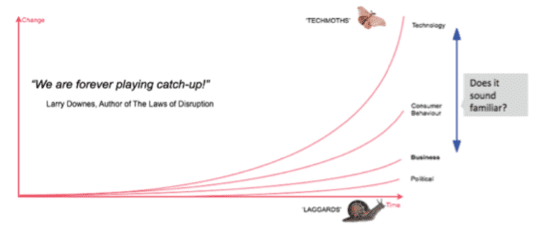
Business challenges in a hyper-connected world
Businesses face many challenges today, all of which impact the scope and effectiveness of marketing strategy. Some of the stand-out challenges include:
Over time, and particularly within the last 15 years, we have seen a rapid increase in the advancement of technology:
Smartphones, 4G coverage and social media has redefined how we consume media.
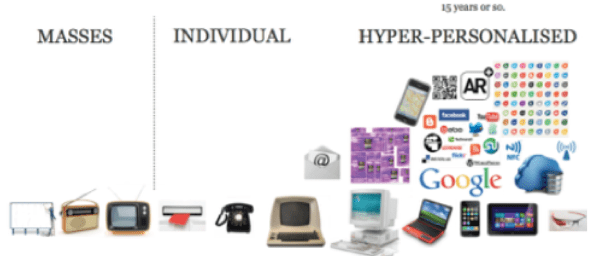
The average UK household today has on average 7.4 connected devices.
With so much distraction, consumers’ attention is at a premium and therefore marketers must put the right mechanisms in place to understand how people and devices can be targeted, e.g. 2nd/ 3rd screening
Despite the hullabaloo surrounding Millennials and how businesses should market to them, there’s a good reason for this concern. The Millennial cohort is an example of a demographic that is always connected, always on and always looking for control, and a reminder of the changing face of the media consumer.
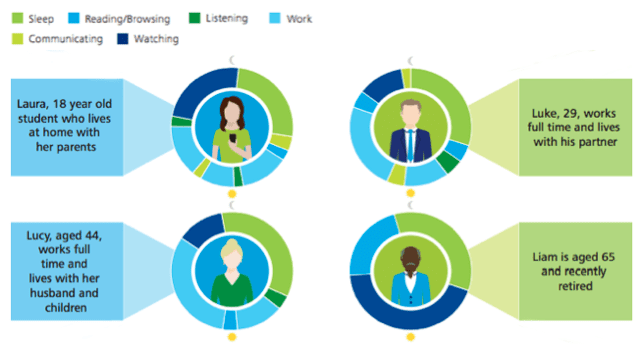
Hype around new technologies and innovations can be distracting and unless this is tempered can result in ‘Shiny New Object Syndrome’
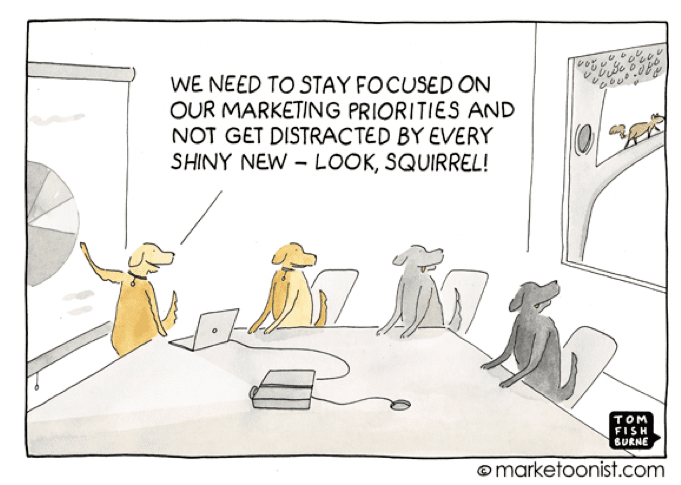
Businesses must always align innovation with relevance and value, for both consumer behaviour and the business itself.
Resources such as Gartner’s Hype Cycle can provide very useful insights
Perhaps the biggest barrier to innovation for many businesses is structure and culture:
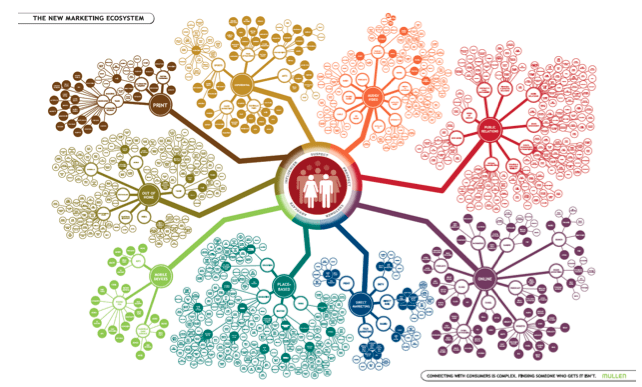
Marketing ecosystem
Other barriers include education, leadership and ideation:
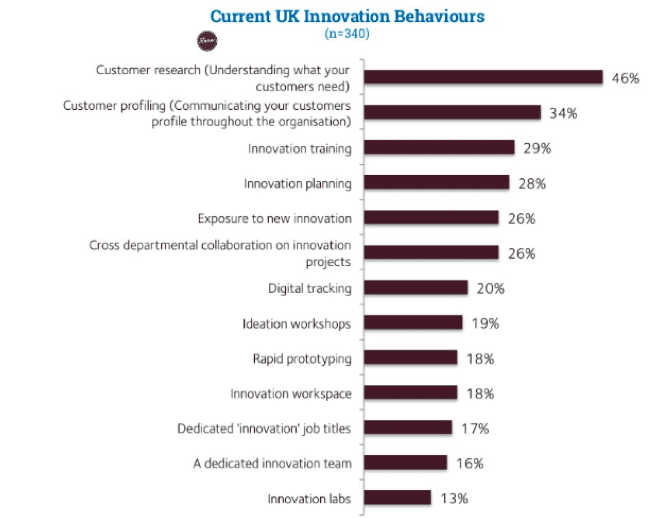
Innovation Index
Developing a culture where digital is embraced and integrated rather than siloed gives marketers a much better opportunity to understand and appeal to consumers.
“Customers expect a consistent experience across all of their touch points with companies and product” – Dwight Griesman, CMO, Forrester
Customers do not differentiate between channels, regardless of how a business is structured internally, e.g. brand, marcomms, digital, ecommerce etc.
Three key tools for multichannel marketing planning
The process of crafting a multichannel marketing strategy is not straightforward and takes time to implement. There are a number of very useful guides on how to take this step-by-step and Smart Insights’ Multichannel Marketing Growth Wheel provides an excellent overview:
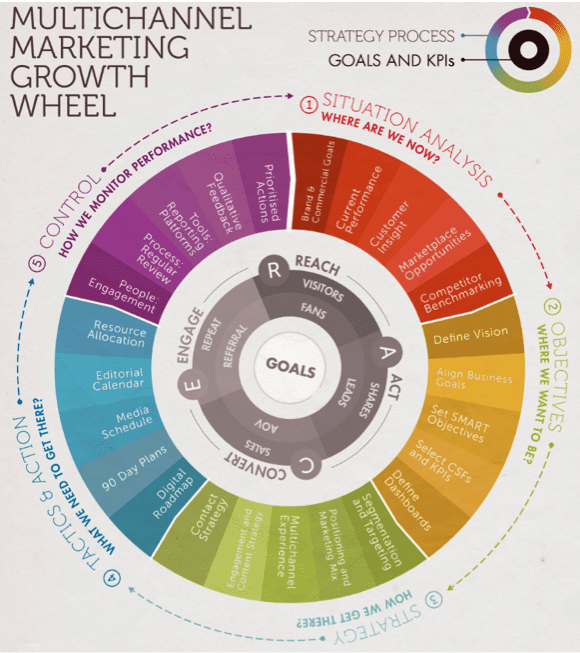
In light of the challenges outlined above, I’m going to focus on section three of the Multichannel Marketing Growth Wheel (‘How we get there?’) and highlight three tools and frameworks that marketers can use to shape their thinking to form an approach to strategy and the development of a proposition:
The three frameworks cover the following areas:
- Customer journey
- Brand
- Content
Defining the customer journey using ZMOT
Considering the world we live in today, what is a typical customer journey?
The truth is that there isn’t a typical journey and our influence as marketers is often limited. Journeys vary by industry, brand and category and can be extremely simple or complex, as illustrated by these two contrasting examples:
Booking a holiday:
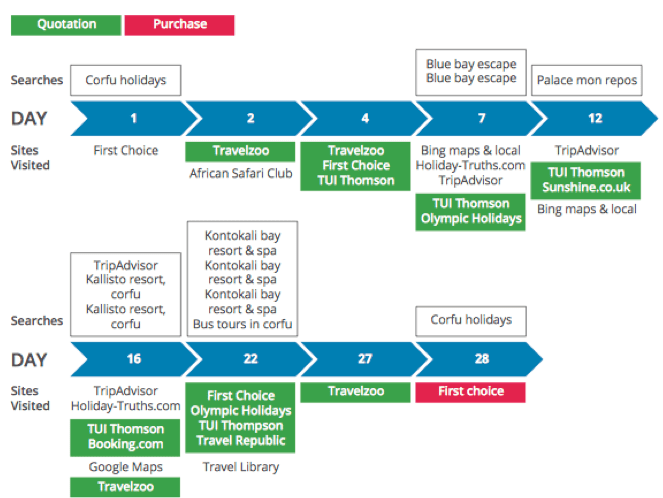
Google Clickstream whitepaper
In this example of booking a holiday, over a 28 day period and lots of shopping around (aggregators, tour operators, review sites), First Choice gets the business in the end following a search once again for “corfu holidays” (which was the query that began their journey). Booking a holiday is an important purchase for many people and therefore consumers take their time to ensure they make the right choice.
Car insurance:
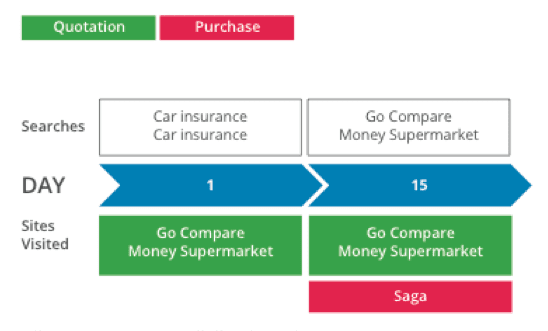
Google Clickstream whitepaper
Buying insurance is shorter and more direct and is often considered to be a ‘hygiene’ activity that we need, rather than want, to do. In addition to price, consumers also tend to stick with brands they believe to have delivered trust and consistency in the past. If the experience was positive before, people continue to buy.
So how can we approach analysing and planning for different customer journeys?
A US study by Carat and Microsoft revealed three basic patterns in shoppers’ paths to purchase, suggesting that it’s often better to think about journeys from the consumer mindset rather than as touchpoints:

With this insight in mind, and despite many different types of customer journey frameworks available, Google’s Zero Moment of Truth (ZMOT) provides a very useful model that combines both consumer mindset and touchpoints to evaluate the customer journey:
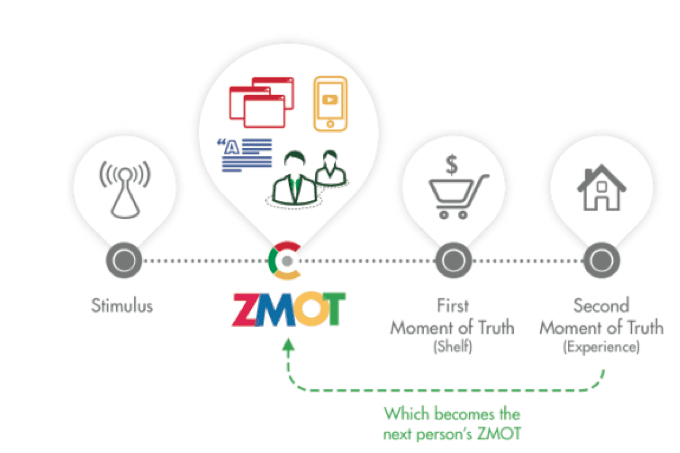
When originally published in 2011, ZMOT suggested that whilst the first moment of truth was in front of the shelf and that the second moment of truth occurred through product trial and experience, the zero moment of truth happened largely online, using multiple journeys and multiple devices.
ZMOT looks at the new types of behaviours that occur after a stimulus (e.g. an advertisement) but before the first moment of truth (e.g. a visit to a store). The zero moment of truth may involve searches for reviews of the product advertised, YouTube demo searches or questions to Facebook or Twitter followers. Brands therefore need to be present at the zero moment of truth to influence decision-making at this earlier stage.
The useful aspect of ZMOT is that rather than replacing the traditional sales funnel, it adds another layer of context. Different channels play different roles at different stages of the journey:
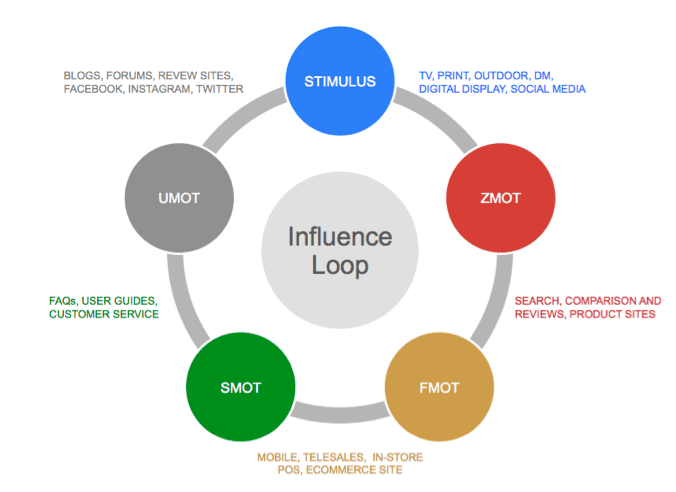
The ZMOT model has evolved over the last five years which can be seen in Google’s publication of micro moments. However, I still believe it provides a useful frame of reference and a valuable tool for marketers.
Understanding brand purpose using the Golden Circle
What is your brand values and purpose? What do you stand for? How do you differentiate versus the competition?
Your brand and business identity is an integral part of how you communicate with customers so it’s therefore essential to have a clear understanding of the purpose that both drives you as a business and inspires consumers to buy from you. One of the tools that I have found to be particularly useful in articulating brand purpose and why you do what you do is Simon Sinek’s Golden Circle marketing model:
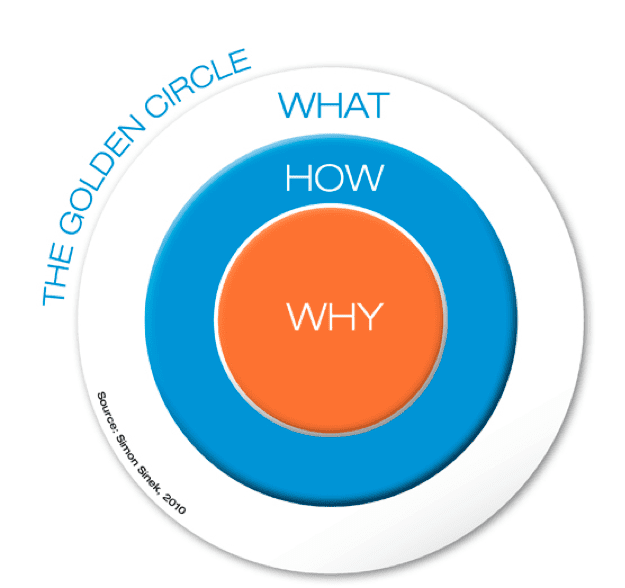
Whilst every company knows what they do (e.g. we make widgets), only some clearly know how they do it (the differentiating value proposition or USP). However, it’s sometimes surprising to learn that very few clearly know why they do what they do. The ‘why’ is the fundamental belief and reason for our existence and should be at the very heart of everything we do.
Simon Sinek argues that when you communicate from the outside-in you are simply competing on features, price and add-ons. This is not inspiring and doesn’t give people a reason to believe in your product, service or cause.
In contrast, good leaders and brands act and communicate from the inside-out. They explain why they do what they do before talking about what they do and how they do it. For example, Apple don’t start by saying they make great computers. Instead, the foundation of much of their communication revolves around their beliefs in thinking differently which sets a tone and inspires loyalty.
The Golden Circle is a simple but effective framework that enables you to define:
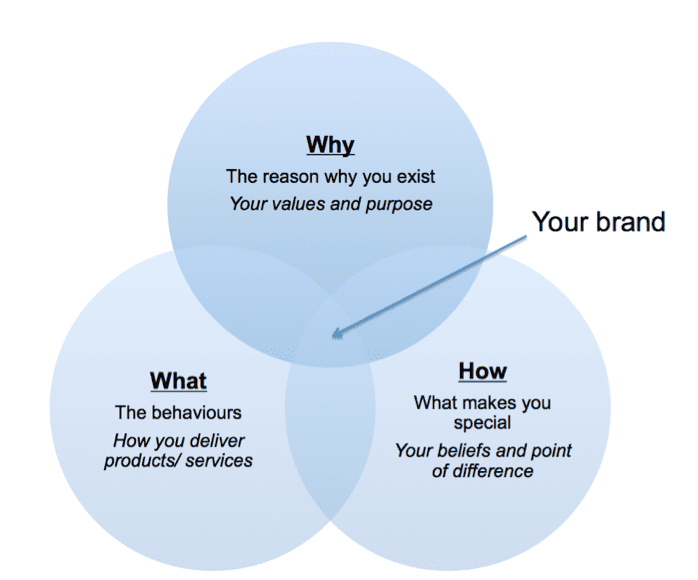
Establishing a clear understanding of your purpose and raison d’être will give you confidence and clarity regarding the multichannel marketing options that align best with your brand.
Establishing content excellence using the Content Marketing Matrix
Content forms the bedrock of everything we do as marketers and therefore the format, structure and type of content we choose to produce to engage consumers must be consistent with our strategy and objectives.
Smart Insights’ Content Marketing Matrix is an excellent framework for generating ideas and identifying the most engaging content types for different audiences:
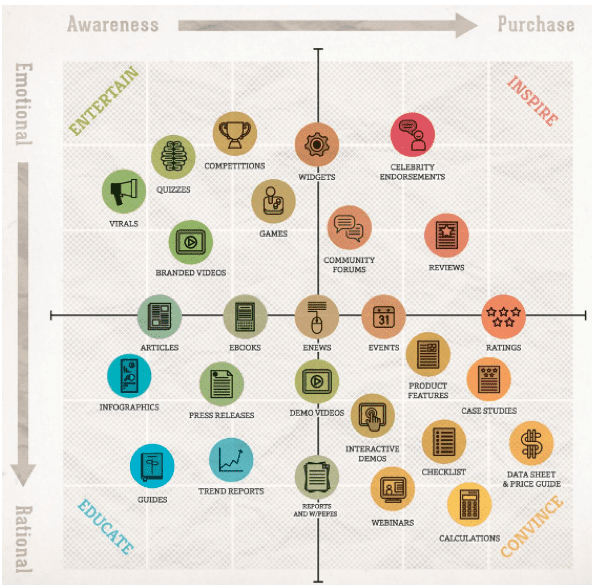
As Danyl Bosomworth explains in his blog post introducing the framework:
“Our matrix is structured to help you think through the dimensions of different content based on how your audience might think and what you're trying to achieve as a business. What will work where your audience are more or less impulsive or rational? What does that mean for content creation and marketing goals? Depending on the quadrant(s) that you feel drawn to for your audience, it offers a starting point for your ideas generation”.
If we think about the multichannel approach, we can see how the Content Marketing Matrix can be applied to different channel options to give our strategy or campaign depth:
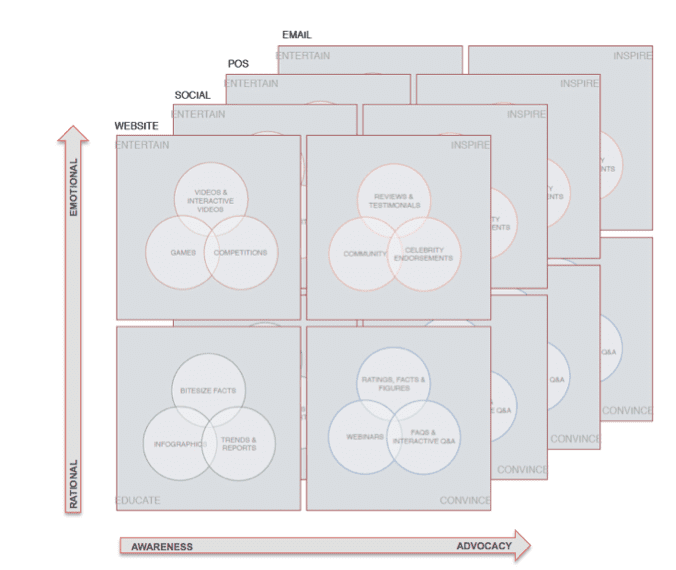
And another benefit of the Content Marketing Matrix is that different content types can be used alongside customer journey models, such as ZMOT, to understand where content can entertain, inspire, educate and convince consumers are different stages of the decision-making process:
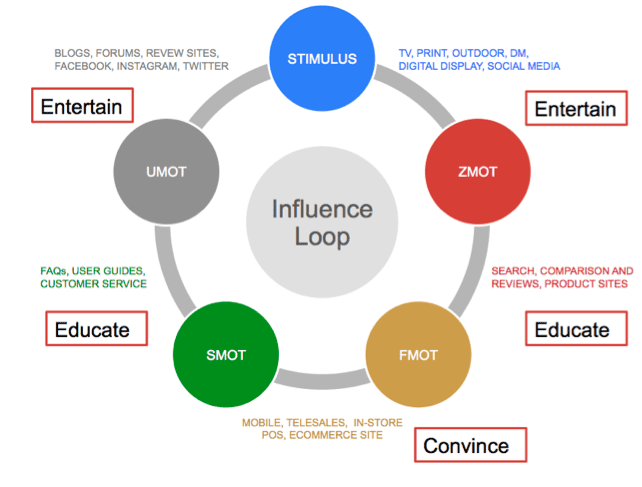
The ZMOT figure above now provides examples of where different types of content can be applied based on different stages of the customer journey and consumer mindsets (rational, emotional, awareness, advocacy).
Summary
Marketing today is a complex process which has made the marketer’s role much more complicated than it once was previously in a predominantly broadcast media landscape.
Today's media landscape is much more fragmented, consumers’ attention is harder to obtain and technology is constant influence on consumer decision-making. To stand-out and be relevant in such a noisy environment requires precision and flexibility.
However, with careful planning and the use of models such as those we’ve looked at in this post, we can begin to analyse different customer journeys, understand where our brand plays a role in the communication process and assess the content needed to make an impact and drive action.
























